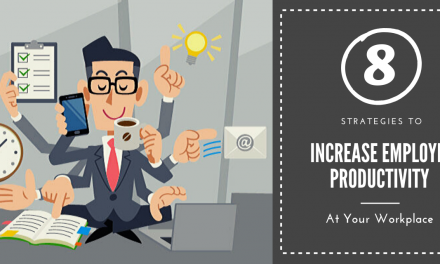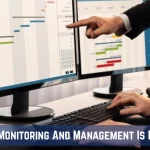Work-life balance might appear to be an impossible task these days. Employees are now working 24 hours a day, seven days a week, thanks to the technology. Fear of job loss motivates people to work longer hours. According to studies, 94% of working professionals work more than 50 hours per week, and almost half work more than 65 hours per week. Experts agree that the cumulative stress of a never-ending workday is harmful. It can harm relationships, health, and general enjoyment.
But exactly how to stay positive in a negative work environment?
Work-life balance means various things to different people, but here, health and career experts provide advice to help you discover the appropriate balance for you.
We all know the answer to what is work-life balance but do we know its importance and how to deal with that as an employee?
How Important Is Work-Life Balance And How An Employee Can Do It For Themselves At Work?
Maintaining a healthy work-life balance is not only essential for one’s health and relationships, but it may also boost an employee’s productivity and, ultimately making him a high performance employee. Your employees will not consider work to be a chore. They will then work harder, make fewer mistakes, and are more likely to become brand champions.
Businesses that develop a reputation for fostering work-life balance have become highly appealing, especially given how tough it can be to recruit and keep younger people these days.
Work-life balance can help you attract a desirable talent pool for recruits and increase retention rates. It will save both time and money while maintaining a high level of in-house skill.
Implement Brief Breaks Throughout the Day
If your employees do not take time off, it is critical to encourage little breaks throughout the day. The human body is not build to spend hours staring at a bright screen. It is detrimental to our physical and emotional wellness.
To counteract this, consider putting up a games room where individuals can interact and get their minds off work. Consider implementing walking meetings outside the workplace and encouraging light exercise throughout the day. You can even go out for coffee as a group. Some of the world’s most successful corporations will bring meditation practitioners to help their employees relax and de-stress.
All of these strategies will improve your team’s work performance, productivity, and workplace satisfaction.
Checkout our other latest blogs
How To Choose A Perfect Attendance Tracking Software: 09 Must-Have Features!
What It Is To Feel Like Work Burnout? Learn How To Cope With It.
5 Smart Tips to Improve Workplace Collaboration Skills
Accept That There Is no such thing as a perfect work-life balance
When you hear the term “work-life balance,” you probably envision having a very productive day at work and then leaving early to spend the rest of the day with friends and family. While this appears to be the ideal situation, it is not always achievable.
Strive for a realistic schedule rather than a flawless one. Some days, you may be more focused on work. While on other days, you may have more time and energy to explore hobbies or spend time with loved ones. Balance is attained through time, not daily.
At times, your family may require your presence- and at others, you may need to travel for business, but allowing yourself to be open to redirecting and analyzing your requirements on each given day is critical to achieving balance.
Set Achievable Objectives for Yourself Everyday
Being able to satisfy priorities gives us a sense of success and control. According to the most recent study, the more command you have over our work, the less stressed we get. So, when it comes to workloads and deadlines, be realistic. Make a to-do list, and prioritize critical chores above non-essential ones. When assistance is required, ask for it.
Flexible Work Schedule
Maintaining a healthy work-life balance is impossible if there is no personal time available after work. In such cases, having a flexible work schedule is critical. Employees benefit from flexibility in their work schedules since it allows them to focus equally on their personal and social lives plus their job. Furthermore, such a timetable can improve an individual’s job performance. It also serves as an alternative stress management strategy.
Team tracking software such as EmpMonitor may be a great ally. With features such as frequent snapshots, thorough reports, behavior tracking, and so on. It has exceeded all other tools and is now considered one of the top monitoring tools.
Here is how to manage all the employee workplace activities:
- Login to the Empmonitor dashboard with login credentials provided.
- The main dashboard will appear on the screen and then click on the behavior tab available on the left sidebar menu under which you will find all the new Empmonitor features.
- Click on the Alerts option.
- Here you can customize all the rules by inserting the name, what it applies to, what will trigger the rules, add conditions, and additional notes.
- After managing the risk level and then click on the save changes button.
- Click on the back button on the top right corner, and you will see all the alert policies that you just customized.
This setting will help you keep track of your employee’s workplace behavior, as this will alert you about all the employees.
Also Watch- How To Manage All The Employee Workplace Activities | EmpMonitor How-To Tutorial Series
Work efficiently
When we delay, the problem expands in our imaginations until it becomes overwhelming. So, when you have a large job at work or home, start by breaking it down into fewer chores. Finish the first before going on to the next. Allow yourself a small reward for each accomplishment, such as a five-minute break or a stroll to the coffee shop. Inform your employer if you are feeling overwhelmed at work by needless routines. The less time you waste on busywork or procrastination, the more time you have to spend productively or with friends or family.
Now that we’ve established how you may improve your work-life balance- let’s look at how organizations can help.
05 Ways Employers Can Help Employees Maintain A Healthy Work-Life Balance
Here we have listed 05 answers to how to balance work and life smartly and with fewer efforts:
Recognize that each person is unique-
Many of your workers may be anxious to attain a better work-life balance. Others, on the other hand, maybe content with the amount of time they spend working. Some people like to start work later but are happy to complete it later as well. Others may be willing to work longer hours if it means they can turn off when they get home.
Some people may want to work part-time but are unsure how to contact their boss about it. Companies that attract – and retain – exceptional employees understand that each employee is unique, and they create work experiences designed for each individual.
If your organization is serious about improving work-life balance for its workers, there will be no one-size-fits-all solution. As every employee is a different individual- you should try different strategies for employees.
Be on the lookout for burnout-
In addition to their job performance, it is your obligation as an employer to care for your employees’ well-being. Learning to recognize burnout is an essential component of this. Chances are, your workers will not explicitly acknowledge to you that they are overworked or stressed (they don’t want you to believe they can’t manage their job, after all). Most of the time, it is up to you to detect when your employees require more balance. Excessive absenteeism, increasing mistake rates, and naive physical weariness can all be indicators.
If you notice an employee who appears distressed, propose they leave early one day or avoid assigning them extra assignments for a while.
The Emergence of the Flexible Workplace-
Those who are successful at balancing their lives sometimes refer to their flexible work schedules. According to a recent study, many businesses have given employees more flexibility with their working hours, where they work during the last seven years. Employers continue to struggle with reduced resources for direct-cost benefits.
They have made it a point. However, to provide employees with access to a broader range of benefits that meet their individual and family needs while also improving their health and well-being.
Employers can benefit from flexibility in the long run. Looking ahead, it is obvious- that to recruit and retain top people, businesses must discover methods to offer flexible work alternatives to remain competitive.
Because we all have various life responsibilities, work-life balance will mean different things to different individuals. Balance is a highly personal issue in our always-on society, and only you can decide which lifestyle is best for you.
Communicate effectively-
When you are in a dilemma, be honest with coworkers or your supervisor. You’re probably not alone. But don’t simply whine; propose viable alternatives. Looking at a scenario through the eyes of another person might also help you to relax. In a difficult circumstance, either reconsider your plan or stand firm and logical. Make room for other people’s points of view and be willing to compromise. Allow time for everyone involved to cool off before you lose control. You’ll be better prepared to deal with the situation later on.
Encourage breaks and foster growth-
Encourage your staff to take breaks, go for a stroll, or even work in a different section of the office. You can set up break rooms or spare workstations for employees to use. It is beneficial to take a break from team talk and phones now and again.
Work and personal life are not enemies.
Work-life balance attitudes will continue to shift as a result of cultural, generational, and economic changes. If employees perceive a lack of work-life balance, flexible leaders can update or rethink their workplace culture to try something fresh. While boosting employee productivity will always be a continual aim of creating a positive work environment. Ensuring workers have the time they want away from the office and enjoy their time at work is an excellent way to retain brilliant people and turn them into lifers, regardless of apparent generational disparities.













